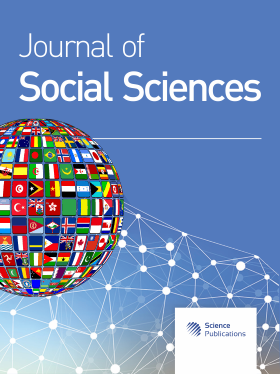Attributes of Domestic Water Sources in a Rapidly Urbanizing State Capital in a Developing Economy
Abstract
Problem statement: The efficiency and effectiveness of domestic water sources are often gauged by availability, accessibility and adequacy. This study examined various variables that could be harnessed in measuring these parameters with respect to water supply in Ado-Ekiti, Nigeria. Approach: The purpose of this study is to investigate the various attributes of domestic water sources in Ado-Ekiti, Nigeria. Three residential zones were identified in the city. They included the urban core, transitional zone and urban periphery. A sample size of 1,200 amounting to 4.0% of the total number of households in Ado-Ekiti, was chosen. Specific areas referred to as Data Delineation Areas (DDAs) were identified in each zone. Based on the estimated population of each DDA, the number of households to be interviewed was estimated. In consonance with some assumptions, 600 (50.0%) questionnaires were administered in the city core while 420 (35.0%) and 180 (15.0%) questionnaires were administered in the transitional zone and urban periphery, respectively. Subsequently, systematic sampling procedure was adopted in the choice of households to be interviewed. Some of the attributes investigated included the main source of domestic water used by household, access to improved source of water, distance from improved source to residence, average time spent to fetch from main source, average number of trips per person per day, quantity of water used per person per day and attack by water-borne diseases. Results: Households in Ado-Ekiti had access to diverse sources of domestic water including wells, boreholes, streams/rivers/springs, tanker-drawn water and rainwater. However, most households (59.8%) depended on wells. Nevertheless, 84.3% had access to improved sources. Only 10.0% of these households obtained supplies from piped water while piped network is largely restricted to the city core. The research showed that distance, time, number of trips and adequacy of supplies placed limitations on access to improved source. Only 63.2% of the households in the city obtained water supplies within 1 km from their dwelling places. About 67.0% spent less than 30 min round trip to obtain water from improved sources while 61.6% made more than three (3) trips to water sources per day. Only 22.7% of the households had access to at least 40 L per person per day while 36.9% were annually afflicted with water-borne diseases such as typhoid, diarrhea and stomach ache. Conclusion: Domestic water supply system in Ado-Ekiti, Nigeria is characterized by low level of access, inadequate supplies from improved sources while these sources are usually distant away from the households.
DOI: https://doi.org/10.3844/jssp.2010.212.220

- 4,458 Views
- 3,059 Downloads
- 4 Citations
Download
Keywords
- Accessibility
- adequacy
- atomization of sources
- availability of water resources
- domestic water source and piped water
